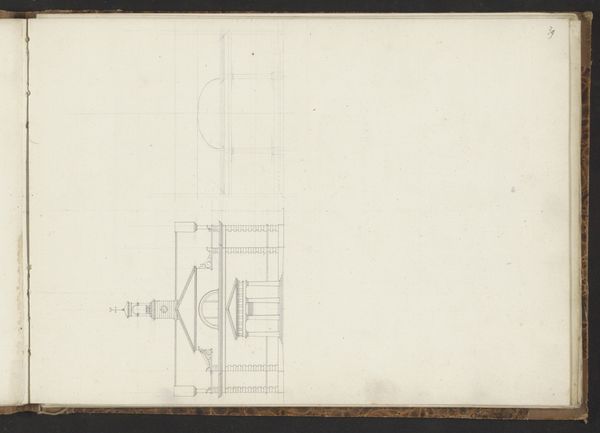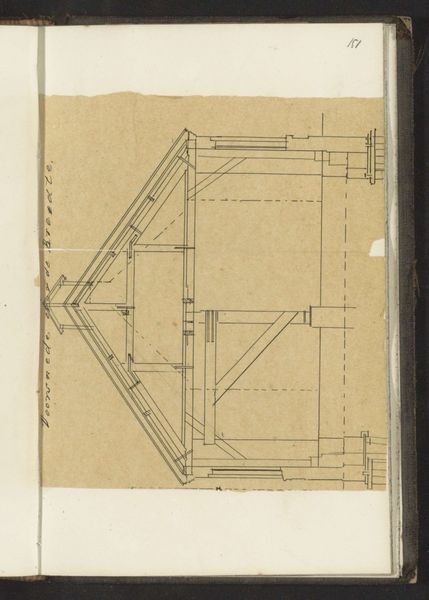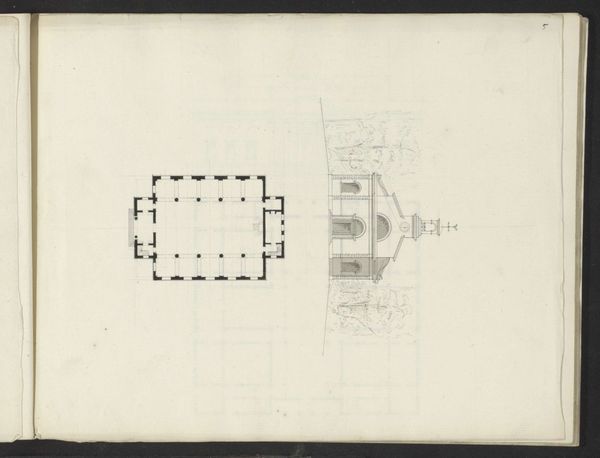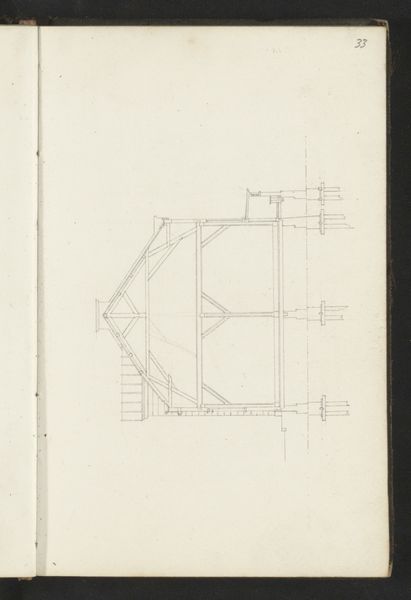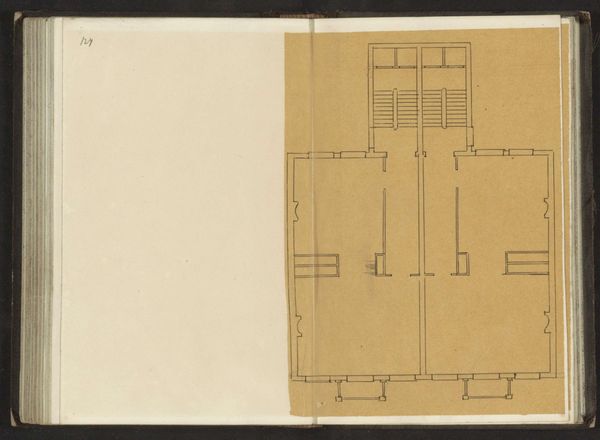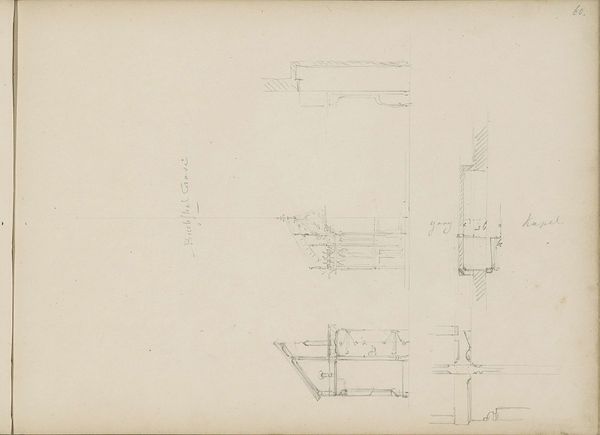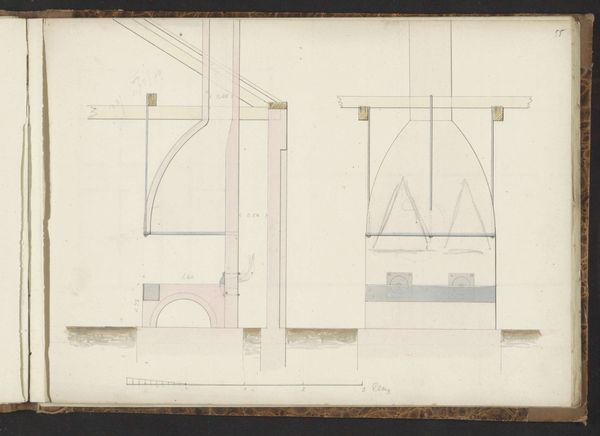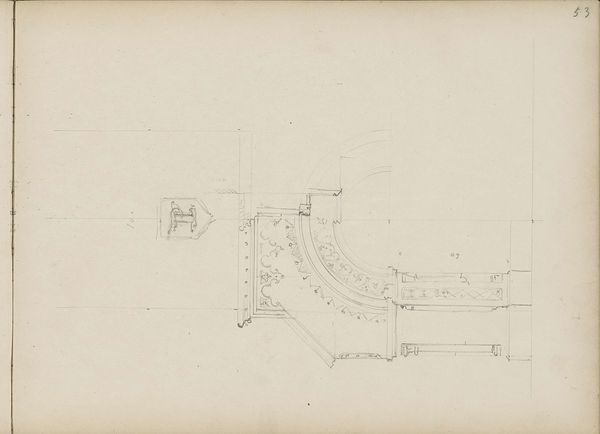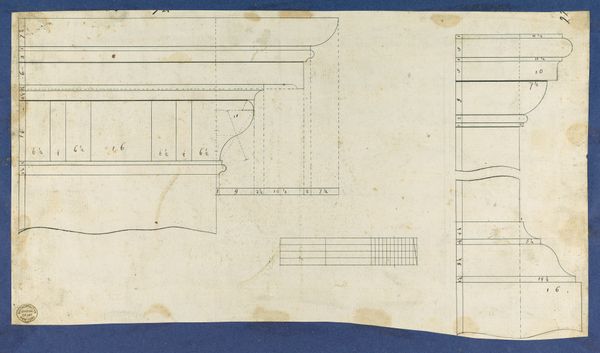
drawing, paper, pencil
#
drawing
#
landscape
#
classical-realism
#
paper
#
geometric
#
pencil
Copyright: Rijks Museum: Open Domain
Curator: I'm struck by the delicate, almost ghostly presence of this pencil drawing. The detail feels so precise, and yet, ephemeral. Editor: Indeed. What we have here is "Plattegrond van een schip," or "Ground Plan of a Ship," dating from roughly 1848 to 1854. It’s attributed to Christian Heinrich Gottlieb Steuerwald. Curator: I see a ship's blueprint, meticulously laid out, but rendered in such faint lines that it feels more like a memory of a ship than a practical design. The lines seem to suggest the ship more than delineate its definite boundaries. Editor: It's fascinating to consider how such a technical drawing still offers glimpses into the labor required for ship construction during that era. Every line, every calculation was crafted by hand. The materials—paper and pencil—are humble, but the knowledge they represent is vast. Curator: And considering the social context of shipbuilding at this time, it resonates with the industrial revolution. What roles did workers inhabit, both materially and socially, and how do these designs of vessels shape our thinking about movement, diaspora, and global capitalistic development? Editor: Precisely! It invites consideration of maritime trade, labor, and the global exchange of goods and unfortunately often humans, all facilitated by these very vessels represented here. And there's something beautiful in elevating the craft of shipbuilding—a collision between design, labor, and trade—to the realm of art. Curator: Absolutely. It speaks to the many untold stories embedded within even the most seemingly mundane objects and designs. Editor: This drawing transforms something utilitarian into a meditation on both industry and the individuals who made it possible. The simplicity, the fragility, it all draws you in. Curator: Yes, and forces us to consider the deep roots from which something as grand as shipbuilding arises. Editor: I think, as an introduction, it’s useful in starting a more productive investigation of art’s ability to illuminate even technical details in our history.
Comments
No comments
Be the first to comment and join the conversation on the ultimate creative platform.

